Day 1: Arrival in Tokyo
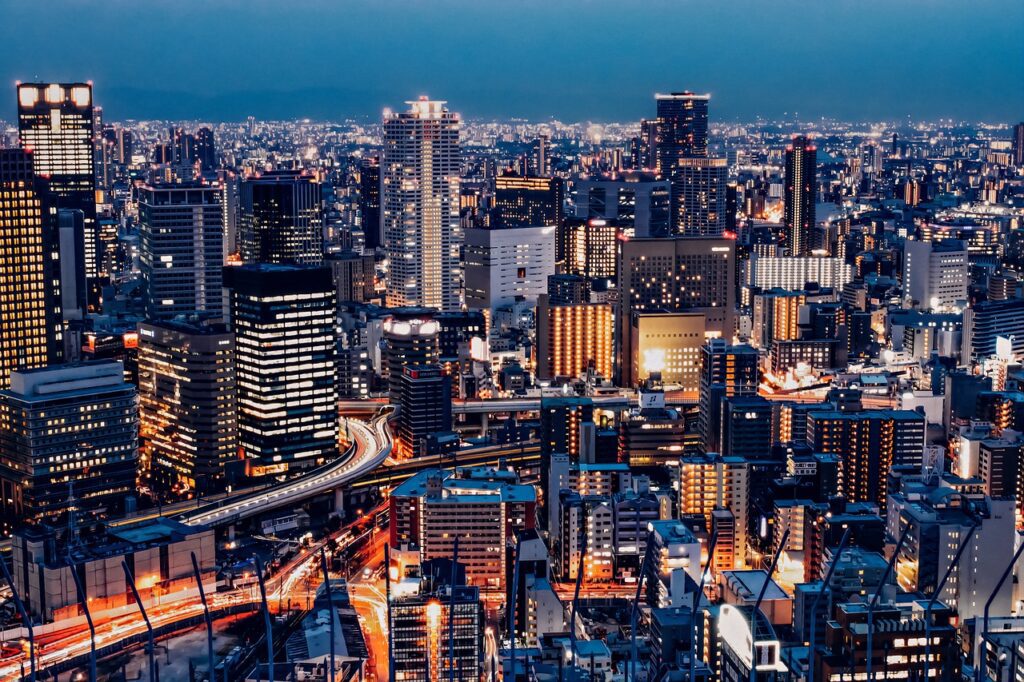
- Arrive in Tokyo, Japan’s vibrant capital.
- Check in to your accommodation.
- Spend the afternoon exploring Shibuya Crossing, Harajuku, and Takeshita Street.
- Enjoy dinner at a local izakaya (Japanese pub).
Day 2: Tokyo Sightseeing
- Visit Tsukiji Outer Market for a fresh seafood breakfast.
- Explore the historic Asakusa area, including Senso-ji Temple and Nakamise Shopping Street.
- Experience modern Tokyo at Odaiba, enjoying attractions like TeamLab Borderless and the Odaiba Seaside Park.
Day 3: Day Trip to Nikko
- Take a day trip to Nikko to visit Toshogu Shrine and beautiful natural scenery.
- Explore Lake Chuzenji and Kegon Falls.
- Return to Tokyo in the evening.
Day 4: Bullet Train to Kyoto
- Travel to Kyoto on a Shinkansen (bullet train).
- Visit Fushimi Inari Taisha, known for its iconic torii gates.
- Check in to your Kyoto accommodation.
Day 5: Kyoto Exploration
- Explore the historic district of Higashiyama, including Kiyomizu-dera Temple and Sannenzaka Ninenzaka.
- Visit Kinkaku-ji (Golden Pavilion) and Ryoan-ji Temple.
- Experience a traditional tea ceremony.
Day 6: Day Trip to Nara
- Take a day trip to Nara to see the Great Buddha at Todai-ji Temple.
- Visit Nara Park and interact with the friendly deer.
- Return to Kyoto.
Day 7: Travel to Hiroshima
- Travel to Hiroshima.
- Visit the Peace Memorial Park and Hiroshima Peace Memorial, commonly known as the Atomic Bomb Dome.
- Explore Hiroshima Castle and its surrounding gardens.
Day 8: Miyajima Island
- Take a ferry to Miyajima Island.
- Visit the iconic Itsukushima Shrine known for its “floating” torii gate.
- Explore the island and hike Mount Misen for panoramic views.
Day 9: Osaka Excursion
- Travel to Osaka.
- Explore Dotonbori and try local street food.
- Visit Osaka Castle and its history museum.
- Enjoy the nightlife and entertainment options.
Day 10: Osaka and Departure
- Spend the morning at Universal Studios Japan (if interested).
- Explore the trendy district of Umeda and Grand Front Osaka.
- Depart from Kansai International Airport or continue your journey.
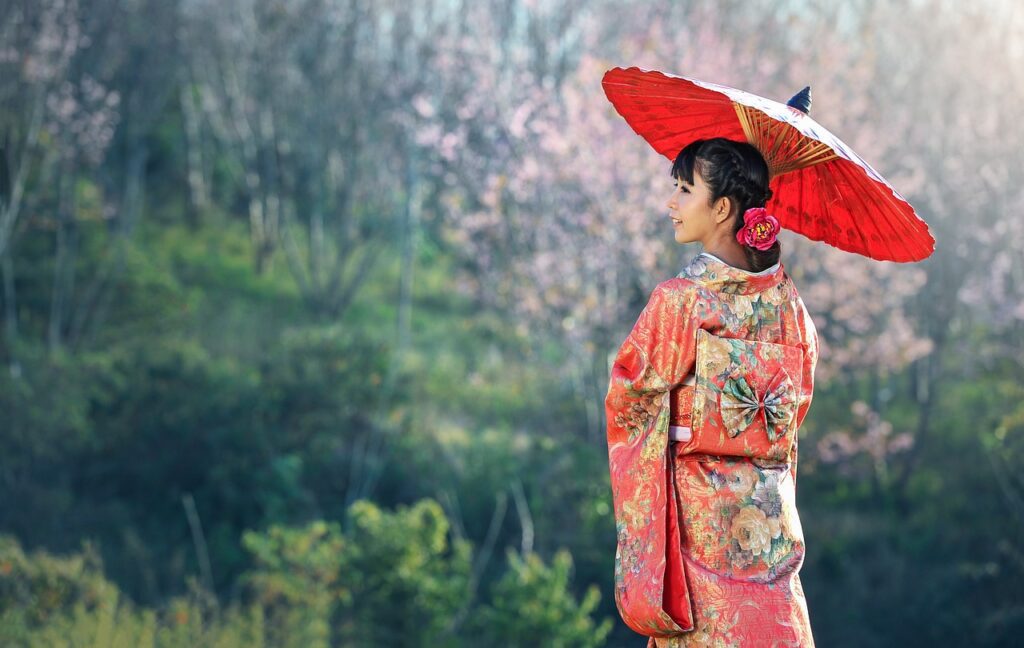
Japan is swiftly solidifying its position as a premier global destination for travelers, captivating people from around the world. Drawing an annual influx of nearly 30 million tourists, Japan’s iconic landmarks and UNESCO World Heritage Sites hold immense appeal. The Japanese government has actively launched campaigns to enrich international tourism, yielding evident results. Since 2013, there has been a remarkable surge in tourists choosing Japan as their ultimate escape.
Day 1: Arrival in Tokyo (Japan)
the vibrant capital of Japan. Complete the check-in procedure at your chosen accommodation. Dedicate the afternoon to exploring Shibuya Crossing, Harajuku, and Takeshita Street.
Shibuya Crossing: A Tokyo journey remains incomplete without immersing oneself in the spectacle of Shibuya Crossing. This renowned pedestrian scramble comes alive as soon as traffic lights transition to red.
Imagine this: Vehicles come to a standstill, creating a pathway for an animated crowd to surge across in perfect harmony. Positioned near Shibuya Station, with origins dating back to 1885, the crossing itself was unveiled in 1932. Its inception coincided with Shibuya’s transformation into a pivotal link connecting Yokohama’s port with Tokyo’s bustling core.
In contemporary times, Shibuya Crossing stands as one of the world’s busiest pedestrian intersections. It has become an iconic representation of Tokyo, making appearances on the silver screen and drawing comparisons to renowned locations like New York’s Times Square and London’s Piccadilly Circus. This reputation is owed to its towering digital displays and the perpetual, dynamic flow of people.
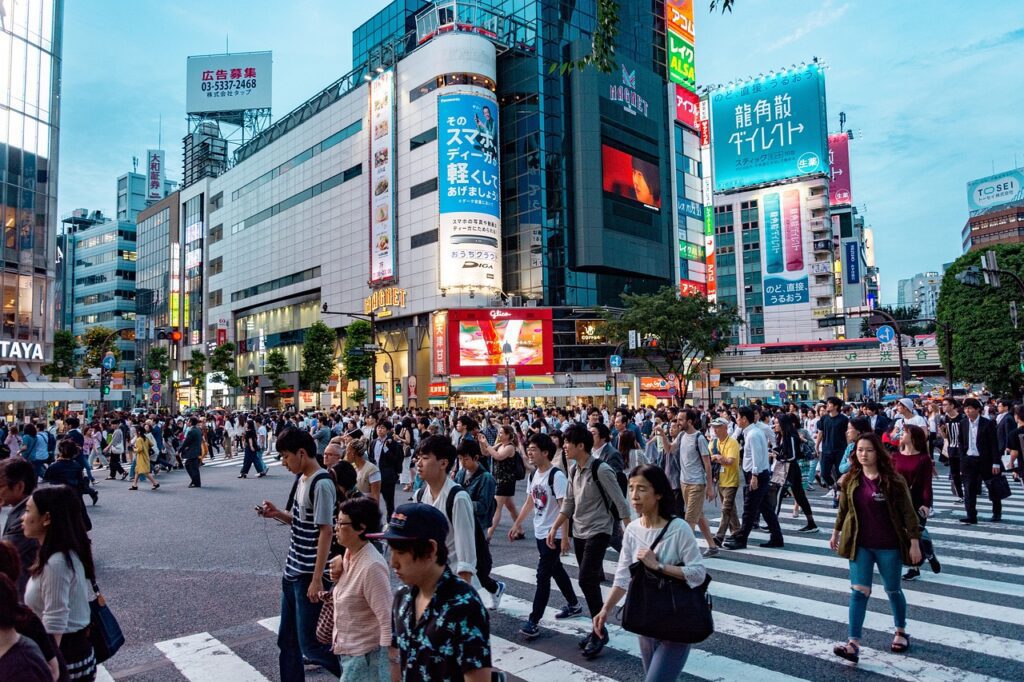
Harajuku and Takeshita Street: Step into Takeshita Dori, a renowned street nestled within Harajuku, Japan’s fashion capital. A paradise for teenagers, tourists, fashion enthusiasts, and culinary connoisseurs alike. This charming pedestrian pathway teems with captivating stores showcasing the latest Harajuku trends, forming a haven for those with a penchant for confections. Amidst prominent establishments like McDonald’s and The Body Shop, Takeshita Dori stands out for its independent fashion boutiques. Recognized for igniting the sartorial aspirations of Japan’s youth, Harajuku’s Takeshita Dori consistently pushes the boundaries of style each year, inspiring locals to flaunt bold, vibrant, and delightfully unique ensembles.
However, beyond its fashionable allure, the spotlight also shines on the dessert havens and cafes that grace Takeshita Dori. Serving as the birthplace of Japanese-style crepes, it is truly a haven for dessert enthusiasts. An array of crepe cafes each contribute their unique touch, and if crepes don’t pique your interest, an array of choices ranging from cotton candy to cream puffs, and even all-you-can-eat dessert spots await. Takeshita Dori becomes a vibrant crossroads where fashion and desserts collide, creating a realm where daring attire harmonizes perfectly with delightful treats.
Positioned as a premier dessert destination in Japan, Takeshita Dori presents an array of must-try specialties and irresistibly charming delicacies. To aid in your exploration, here’s a quick rundown of our favorite snack havens and dining spots around Takeshita Dori, Omotesando, and Harajuku:
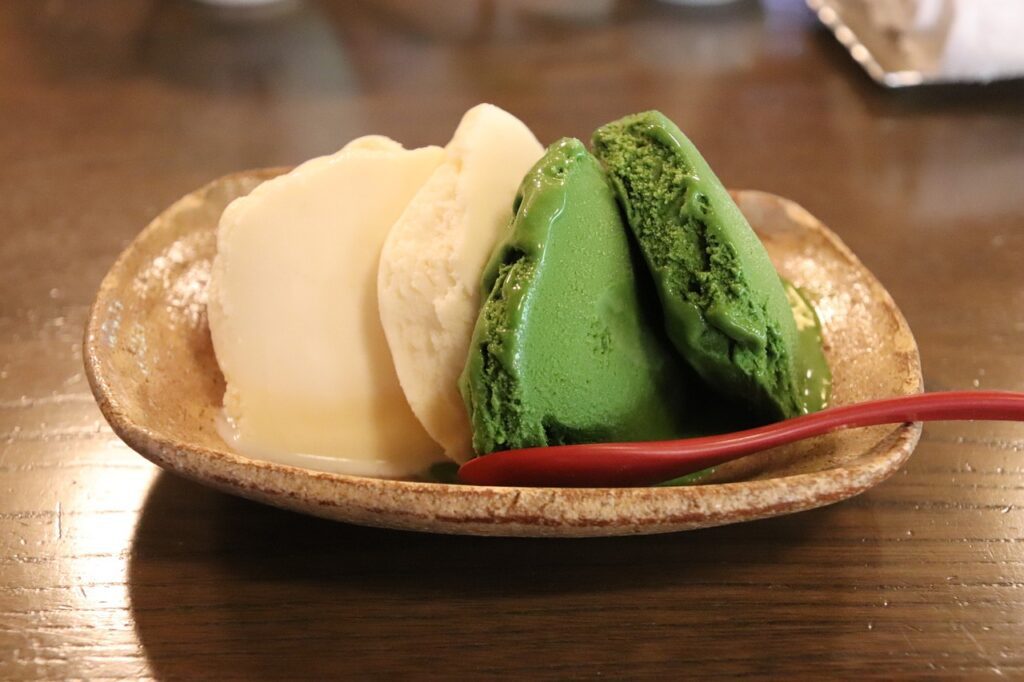
- Kawaii Monster Cafe: Bursting with Extra Kawaii Delights
- ZAKUZAKU: Indulge in Crunchy Cream Puffs
- Cookie Time: Abundance of Cookie Choices
- Sweet Box 2
- Comcrepe: Enjoy Creme Brule Crepes
- Marion Crepes: Birthplace of the Original Japanese Crepe
- Sweets Paradise: An Unrestricted Sweet Haven
- Cafe Ron Ron: Desserts on a Conveyor Belt
- Chocolate Pizza Bar: Fusion of Pizza and Dessert
- Gomaya Kuki: Explore Sesame Seed Sweets
- Dominique Ansel Bakery
- Totti Candy Factory: Dive into the Magic of Cotton Candy
- Harajuku Denki Shoukai: Creative Light-bulb Beverages
- Cafe & Pancake Gram: Revel in Japanese-style Pancakes
- Long! Longer!! Longest!!!: Unveil the Longest Treats
- Calbee +: Premier Store of a Renowned Chip Retailer
- CANDY A☆GO☆GO!: Assortment of Global Snacks & Treats
- Garrett Popcorn Shops: Exceptional Popcorn and Exclusive Japanese Designs
These delightful destinations are sure to infuse your exploration of Takeshita Dori with delectable twists.
Conclude the day with dinner at a local izakaya (Japanese pub).
Day 2: Tokyo Sightseeing
Embark on a visit to Tsukiji Outer Market for a fresh seafood breakfast. Explore the historic Asakusa area, including Senso-ji Temple and Nakamise Shopping Street.
Asakusa: A highly sought-after destination in Tokyo, Asakusa echoes with the remnants of Edo culture and the city’s heritage. It’s an essential stop to catch a glimpse of life in ancient urban Japan.
While many tourists focus on the Senso-ji Temple and Nakamise shopping street in Asakusa, hidden treasures await in its enchanting backstreets. These narrow alleys house captivating stores offering everything from traditional crafts to contemporary trends.
Yet, Asakusa’s allure extends beyond the temple. Discover Kappabashi Street and Shin-butsu-gu Street.
Kappabashi: Distinguished as a renowned wholesale district for restaurants, Kappabashi is a treasure trove of kitchenware encompassing global and Japanese items.
Shin-butsu-gu Street: This street specializes in accessories for Shin-btsu-gu, catering to Kamidana or Butsudan—personal shrines and memorial temples for departed loved ones. It’s a sanctuary for enthusiasts of traditional Japanese art.
Positioned between Asakusa and Ueno, Shin-butsu-gu Street is easily accessible via the Ginza subway line. This captivating street finds its place on Asakusa Dori Street, nestled between Tawaramachi and Inaricho stations.
Experience modern Tokyo at Odaiba, where you can enjoy attractions like TeamLab Borderless and the Odaiba Seaside Park.
Odaiba: Situated within Tokyo Bay, Odaiba offers a contemporary escape, seamlessly blending entertainment, shopping, dining, and coastal allure to create the ultimate vacation ambiance.
A standout gem is TeamLAB Borderless, Tokyo’s pioneering digital art museum. This immersive art realm defies boundaries, guiding visitors through a map-less journey where projectors and creativity converge for a mesmerizing experience that appeals to all ages. Beyond the art, the tea room brings digital creations to life in your cup, and the gift shop allows you to exchange points for souvenirs.
In Tokyo Bay, Odaiba Seashore Park enchants with green spaces, an artificial beach, and sweeping vistas of Tokyo Bay, the Rainbow Bridge, and Tokyo Tower. An interesting historical tidbit: Odaiba’s Daiba 3 and Daiba 6 once served as protective forts, with Daiba 3 now transformed into a park. Among the year’s events, the Odaiba marathon and the lantern festival in July stand out as highlights.
Day 3: Excursion to Nikko
Embark on a day trip to Nikko to visit the renowned Toshogu Shrine and immerse yourself in the captivating natural beauty of the area. Explore the picturesque Lake Chuzenji and marvel at the breathtaking Kegon Falls. Return to Tokyo in the evening.
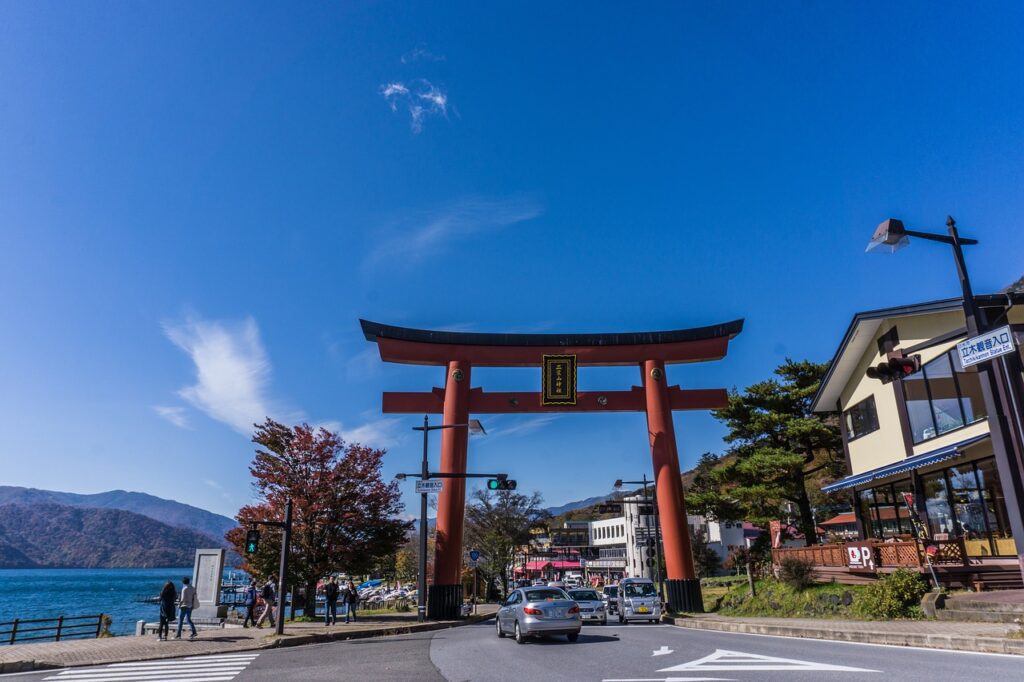
Nikko (日光), situated in the northern part of Tochigi Prefecture, approximately 100 km north of Tokyo, is a treasure trove of historical significance. Though often referred to as a city, it exudes a village-like atmosphere, celebrated for its revered shrines, temples, and the enchanting surrounding landscapes.
Its convenient proximity to Tokyo makes it an excellent option for a day trip, although staying overnight provides an opportunity to truly delve into its rich history. Nikko offers an array of attractions and activities, including a diverse selection of onsen (hot springs) that provide relaxation after a day of exploration and hiking. This guide provides a comprehensive overview of how to reach Nikko from Tokyo and what to savor during your visit.
Located within Nikko National Park, Lake Chuzenji (中禅寺湖) originated from the eruption of Mt. Nantai around 20,000 years ago. Standing at an impressive height of 1,269 meters, it claims the title of Japan’s highest lake. Wander along its 25-kilometer lakeside paths or opt for a boat or SUP tour to experience changing views of the water, from the blossoming of spring to the vibrant hues of autumn.
A brief stroll will lead you to Kegon Falls, an exceptional gem among Japan’s waterfalls. Treat yourself to Nikko’s local delights such as yuba and Swiss cow milk ice cream as you journey to the falls.
Kegon Falls (Kegon no Taki), situated within Nikko National Park, draws its waters from Lake Chuzenji above. Plunging an impressive 97 meters, it ranks among Japan’s top three waterfalls. Admire its grandeur from a free viewing deck or opt for a paid elevator ride to reach the base and experience its intricate cascade up close.
Please note that elevator timings may vary based on the season and weather conditions, and there is a fee of ¥550 for a round trip.
Day 4: High-Speed Train to Kyoto
Embark on a journey to Kyoto aboard the Shinkansen (bullet train). Upon arrival, visit the iconic Fushimi Inari Taisha, celebrated for its striking torii gates
The southern region of Kyoto boasts an array of exceptional religious sites, including ancient temples and serene shrines. Among these, the Fushimi Inari Shrine holds a special place on every traveler’s itinerary. Nestled at the base of Inari mountain and known as Fushimi Inari Taisha, this captivating site boasts a history spanning over a millennium. Its allure even extends to the world of cinema and television. Join the multitude of visitors who gather at this significant religious landmark each year by delving into this comprehensive guide, which unravels the shrine’s history and its iconic vermilion gates.
Afterward, check in to your chosen accommodation in Kyoto.
Day 5: Discovering Kyoto
Explore the enchanting Higashiyama district, which includes notable sites such as the Kiyomizu-dera Temple and the charming Sannenzaka Ninenzaka streets.
The meticulously preserved Higashiyama District, also known as Higashiyama-ku, is a treasure trove of historical wonders that vividly evoke the spirit of feudal Japan. This captivating district brims with traditional residences, shops, tea houses, pottery stores, eateries, and significant landmarks such as temples and shrines. Beyond its renowned cherry blossoms in spring, Higashiyama beckons tourists year-round to immerse themselves in its cultural heritage and gain insights into life during Japan’s feudal era. Perched along Kyoto’s Higashiyama slopes, which translates to “Eastern Mountains,” this extraordinary location is a haven for travelers who relish gradual explorations of history.
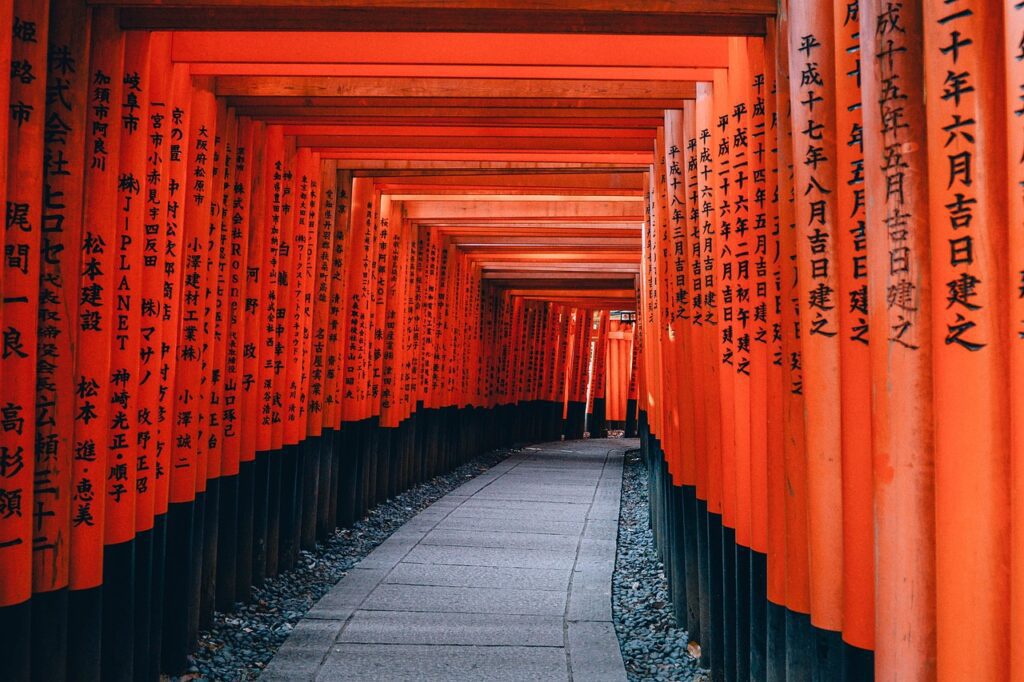
The Kiyomizu Temple, an awe-inspiring multi-tiered wooden structure, stands as one of Higashiyama District’s most iconic landmarks. This temple pays homage to the goddess Kannon and represents a masterpiece of traditional Japanese architecture, constructed without the use of nails. Its expansive veranda offers breathtaking panoramic views, making it an ideal spot for capturing picturesque moments. The temple is also home to the Otowa Waterfall, believed to grant wishes to those who partake of its waters. Surrounded by lush gardens, structures, and natural beauty, the Kiyomizu Temple holds allure for both nature enthusiasts and history aficionados, making it an essential destination to explore.
Address: 294 Kiyomizu, Higashiyama Ward, Kyoto
Entrance Fee: 400 yen for adults
Operating Hours: The temple generally opens at 6 a.m. daily, but closing times vary depending on the season. It is recommended to check online for the specific closing times before your visit.
Experience a traditional Japanese tea ceremony as part of your day’s activities.
Day 6: Nara Day Trip
Embark on a day trip to Nara to witness the Great Buddha at Todai-ji Temple
In the year 752, Emperor Shomu’s decree led to the creation of the awe-inspiring Great Buddha Hall at Todai-ji Temple in Nara, an architectural marvel as the world’s largest wooden structure. This hall houses an immense Rushana Butsu statue. Inside the Daibutsu Hall, you’ll encounter a monumental 14.84-meter bronze “Cosmic Buddha” (Mahavairocana), an attention-grabbing masterpiece weighing a staggering 500 metric tonnes.
Emperor Kammu’s decision to relocate the capital in 784 aimed at diminishing Nara’s temple influence, yet Todai-ji maintained its connection to the imperial family. Nearby Kofuku-ji, a temple of the Fujiwara clan, also held significant sway. Todai-ji, a member of Nara’s Seven Great Temples, flourished prior to shifts in the capital. The Daibutsu Hall houses crucial sculptures, with more to explore in nearby Hokkedo and Kaidan-in.
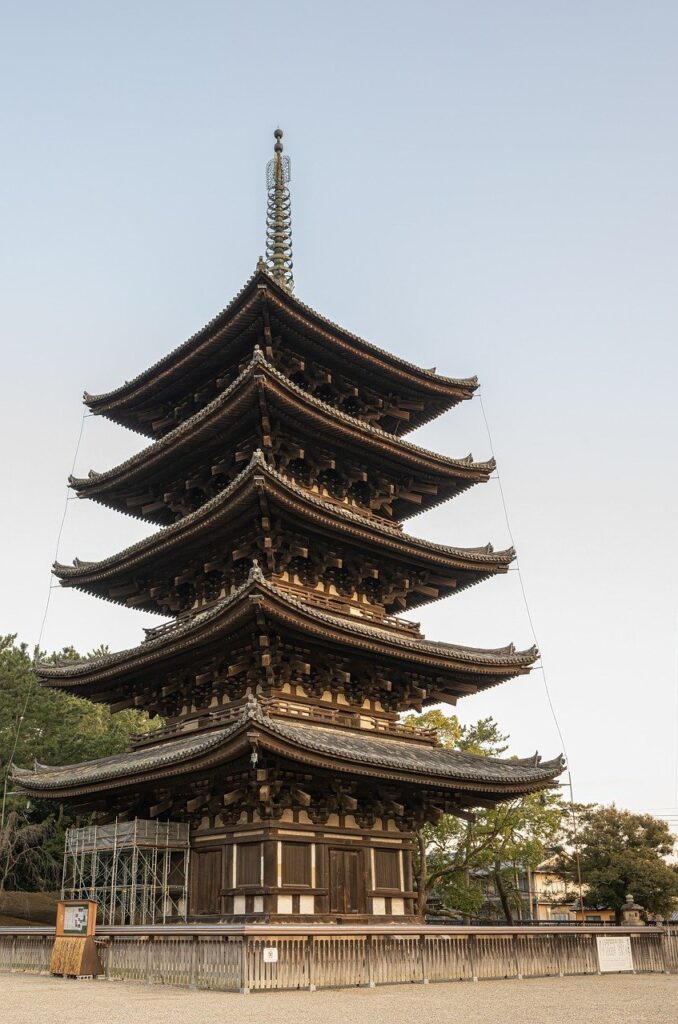
Explore Nara Park and engage with the friendly roaming deer. The expansive park covers an area of 511 hectares and features attractions like the Ukimido Pavilion and Mt. Wakakusa. It is home to UNESCO World Heritage sites, including Todaiji Temple, Kasuga-Taisha Shrine, and Kofukuji Temple, as well as cultural treasures like the Shosoin Treasure House and Nara National Museum. With its lush lawns, majestic temple structures framed by trees, and playful deer herds, Nara Park beautifully combines natural beauty and historical significance. The synthesis of “Daibutsu, greenery, and deer” encapsulates the essence of Nara Park and captures the spirit of the ancient capital.
Return to Kyoto to conclude your day’s adventure.
Day 7: Journey to Hiroshima
Embark on a journey to Hiroshima, a city with profound historical significance. Begin by visiting the Peace Memorial Park, home to the Hiroshima Peace Memorial, commonly known as the Atomic Bomb Dome.
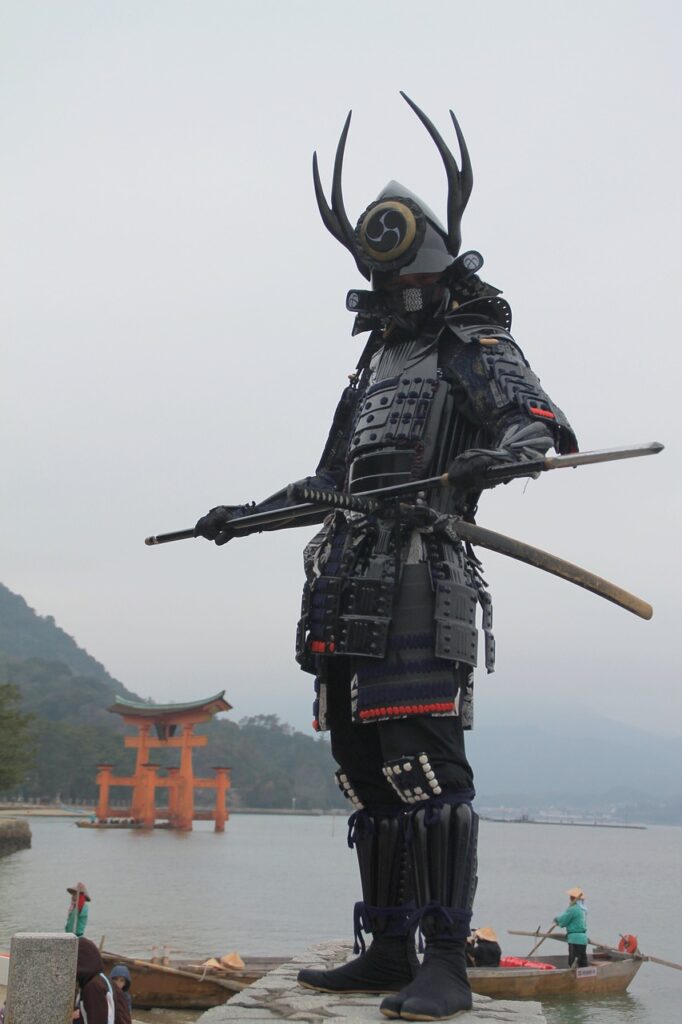
The Hiroshima Peace Memorial Museum, along with its surrounding Peace Memorial Park, stands as the foremost and most visited attraction in Hiroshima, drawing approximately one million visitors annually. Within the museum, visitors are immersed in the somber events of August 6, 1945, when Hiroshima experienced the devastating impact of the world’s first atomic bomb. Emitting a profound message of peace, both the Peace Museum and the park are essential destinations for all those visiting Hiroshima.
The museum is encompassed by the Peace Memorial Park, a tranquil expanse adorned with lush greenery and crisscrossed by pathways leading to various memorials and statues dedicated to peace. Nestled between two rivers, this park provides a serene backdrop for leisurely strolls and moments of contemplation.
Afterward, explore Hiroshima Castle and its beautifully landscaped gardens, immersing yourself in the historical and cultural essence of the city.
Day 8: Miyajima Island Exploration
Embark on a ferry ride to Miyajima Island, also known as the “shrine island.” Here, you’ll encounter the iconic Itsukushima Shrine, renowned for its unique “floating” torii gate. This shrine holds a prominent position among Japan’s revered spiritual sites, with a history tracing back to the 12th century.
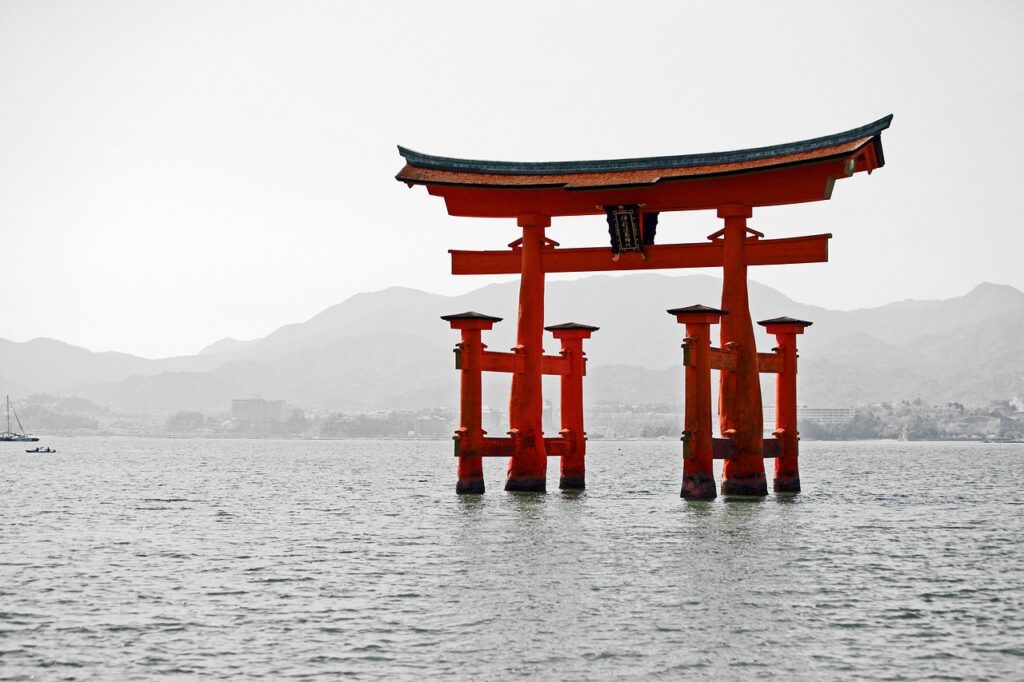
Unlike conventional shrines, both the shrine and its torii gate are ingeniously constructed above the water’s surface, creating a mesmerizing and distinctive sight. During high tide, the torii gate and the shrine appear to float on the water, contributing to a captivating illusion. Beyond the torii gate, the shrine complex comprises a prayer hall, main hall, and even a Noh theater stage. Elevated boardwalks connect these architectural elements, offering a unique vantage point above the sea.
Spend time exploring the island and consider hiking up Mount Misen to enjoy panoramic vistas that showcase the island’s natural beauty.
Day 9: Osaka Adventure
Travel to Osaka, a vibrant city known for its dynamic culture and rich history. Begin by immersing yourself in the bustling atmosphere of Dotonbori, where you can savor local street food and experience the energy of this lively district.
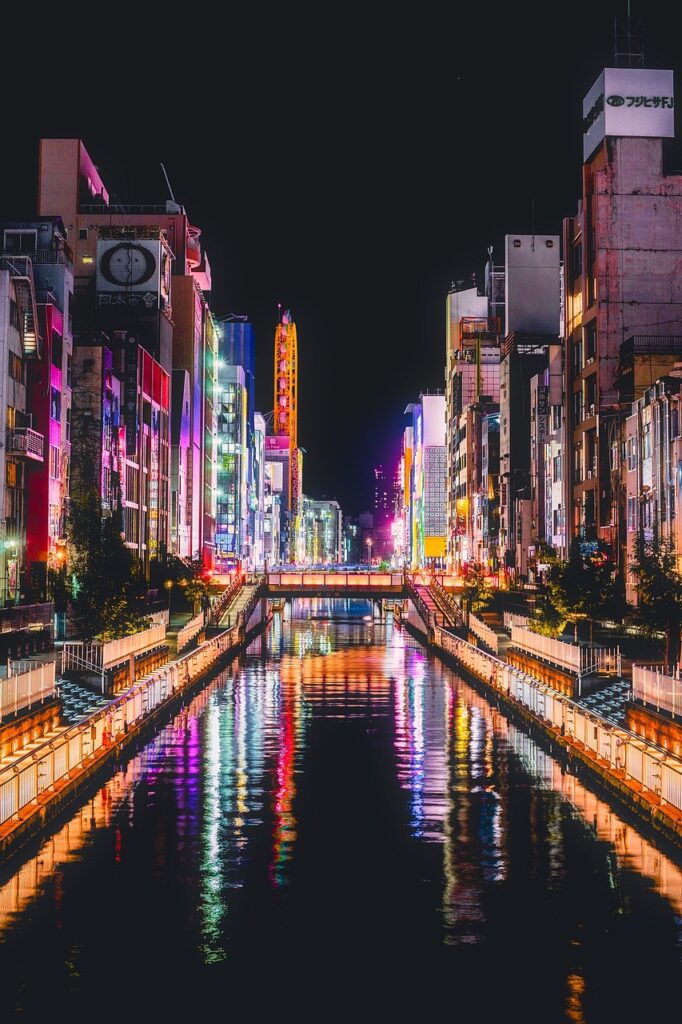
Next, visit Osaka Castle and its accompanying history museum. Nestled within the castle, the Osaka City Museum provides a comprehensive journey through Osaka’s historical, economic, and cultural evolution. Established in 1960 and housed in a three-story building, the museum offers regular exhibitions on its first and second floors, with special exhibitions held on the third floor. Explore Osaka’s history and culture through a diverse array of authentic artifacts, including ancient documents and colorful nishiki-e prints.
As the day transitions into evening, delight in Osaka’s nightlife and explore the array of entertainment options the city has to offer.
Day 10: Osaka Exploration and Departure
Begin your day with a visit to Universal Studios Japan, an exciting theme park offering a variety of attractions and experiences. If it piques your interest, spend the morning enjoying the park’s offerings.
Later, explore the trendy district of Umeda and Grand Front Osaka, soaking in the urban atmosphere and diverse shopping and dining experiences.
As your journey draws to a close, you have the option to depart from Kansai International Airport or continue your adventure onward. Reflect on the memories and experiences you’ve gathered during your exploration of Japan’s diverse cities and landscapes.